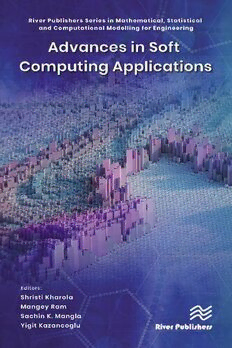
Advances in Soft Computing Applications PDF
305 Pages·2023·15.82 MB·English
Most books are stored in the elastic cloud where traffic is expensive. For this reason, we have a limit on daily download.
Preview Advances in Soft Computing Applications
Description:
The proclivity of today’s technology to think like humans may be seen in new developing disciplines such as neural computing, fuzzy logic, evolutionary computation, Machine Learning, and probabilistic reasoning. These strategies are grouped together into one main technique known as "soft computing." This book discusses the most recent soft computing and fuzzy logic-based applications and innovations in industrial advancements, supply chain and logistics, system optimization, decision-making, Artificial Intelligence, smart systems, and other rapidly evolving technologies. In today’s competitive world, the book provides soft computing solutions to help companies overcome the obstacles posed by sophisticated decision-making systems.“Uncertainty” is unquestionably a major feature of human thinking. This idea of how to convey “uncertainty” in programming resulted in the development of a theory known as fuzzy theory. The concept of fuzziness focuses around the representation of ideas that are somewhat ill-defined, unclear, or, as the term implies, uncertain. As a way, fuzzy theory may be said to be represented in such a manner that it describes both randomness and uncertainty at the same time. Fuzzy sets and soft computing offer multiple theoretical and practical tools for challenging linguistic and numerical modeling applications. When human judgments and modeling of human knowledge are required, fuzzy set techniques are typically the best choice.
See more
The list of books you might like
Most books are stored in the elastic cloud where traffic is expensive. For this reason, we have a limit on daily download.
